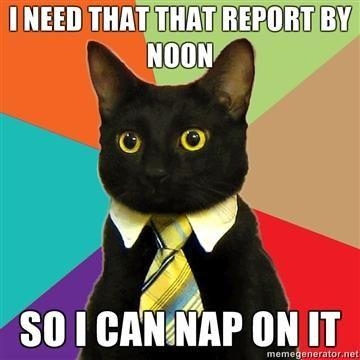 The internet has changed the face of marketing. Using the power of social media, ideas can propagate at the speed of a mouse click and become a sensation almost overnight. One way ideas and messages are spread is virally through the power of memes. An internet meme is a concept or message that spreads virally from person to person online – and it’s a powerful marketing tool.
The internet has changed the face of marketing. Using the power of social media, ideas can propagate at the speed of a mouse click and become a sensation almost overnight. One way ideas and messages are spread is virally through the power of memes. An internet meme is a concept or message that spreads virally from person to person online – and it’s a powerful marketing tool.
Memes can take the form of a photo, hashtag, link to a website or even simply a play on words that readers want to share with others. Most memes are humorous. Everyone loves to laugh, so funny memes are more likely to go viral. Memes not only make people smile, laugh and think, they also create buzz for your business. When used correctly, memes are a good branding tool and a way to draw new customers to your products. Here are some tips for using memes in your marketing campaigns.
The key to success with memes is to develop ones that make people want to know more about your products and services but in a way that’s clever, thought-provoking and shareable. A meme has no power unless people are motivated to share it with their friends and family. Remember the famous “Got Milk?” campaign with people sporting milk mustaches? That’s the type of meme that makes people take notice and share. Another famous one that gained recognition before the rise of the internet was Wendy’s “Where’s the Beef?” So powerful was this meme that the phrase has now become a cliché.
When developing a meme for your own products and services, think about the mindset of your customers and what appeals to your target market. If you’re marketing to older adults, racy humor won’t get you very far and may even offend some readers. On the other hand, you can be a little “off-the-wall” when you’re marketing to teens or young adults. Think about what problems your product or service solves and come up with a short, catchy phrase to show how your offer solves their problem. The most effective memes are short because short and easy to remember with lots of impact. After all, “got milk” was only two words.
The best memes are visual too. The “got milk” campaign would have been much less effective without the smiling face of celebrities with their mouth covered with milk. A visual says what words can’t say and makes it more likely that your meme will go viral. Photos of animals doing funny things are always a hit, so if you can relate your marketing message to a humorous animal photo, so much the better. Relating your meme to a current event can also give it more short-term exposure, but it may also die down quickly once people are no longer focused on the event.
Memes can take many forms. A funny video, GIF, audio, song of catch-phrase can be a powerful meme, but they should be simple and easy-to-understand, never so clever that people have to stop and think about what you’re trying to say. It should convey the message effortlessly and have instant impact. Come up with a number of memes initially, and test them out on people to see how they respond before posting them online. Once you’re satisfied with your meme, post it on your website and blog. Include social media “share” buttons on the same page to help it go viral. Closely monitor the response to your meme. If the first one isn’t a success, you can always try again, but don’t take it too far. Trying too hard to be cute and funny can turn people off and alienate your readers.
Have fun creating memes, and enjoy the free publicity and traffic they can bring to your online business!
Image: Business Cat Meme (2011)